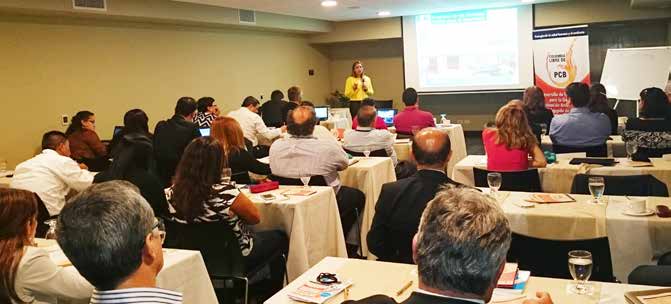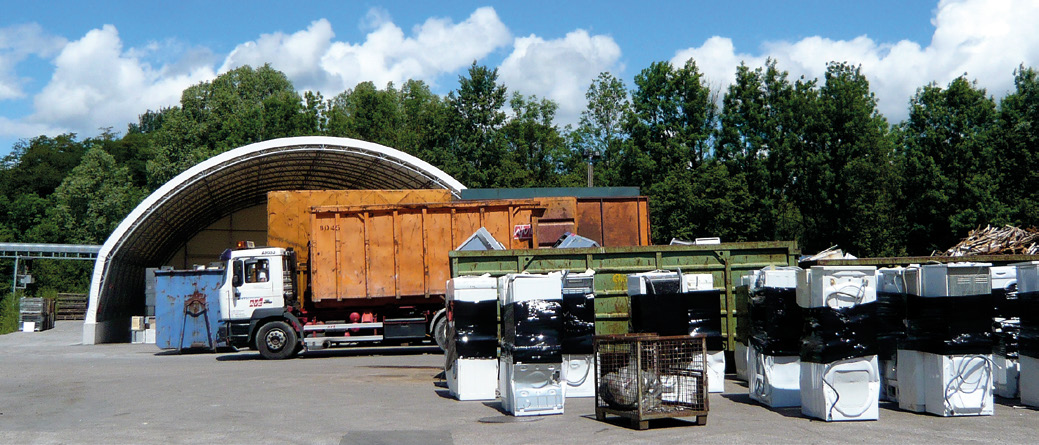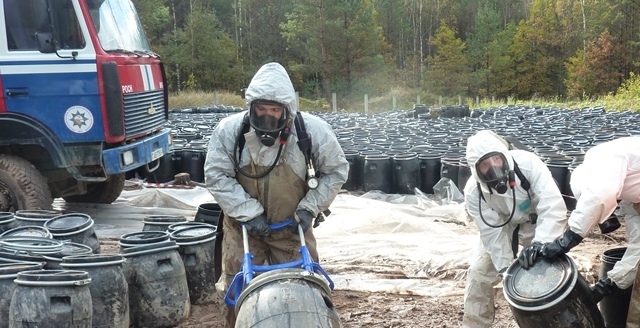Project components
Activities to be implemented under the project are shown below as several project components.
- National regulatory framework for ODS and PCB/POP management and disposal
A national regulatory mechanism for ODS and PCB/POP management and disposal, a registry for ODS-, PCB- and POP-containing wastes, and adequate financial models for the further operation of the sub-regional centers will be developed and established in the participating countries. - Regional network of national sub-networks for collection, storage, transportation and complete destruction of ODS- and POP-containing wastes
The national sub-networks for ODS, PCB and POP disposal will combine into a common regional network to facilitate interaction, coordination of activities and communication between the participating countries. - ODS extraction during recycling of refrigerating equipment with subsequent destruction at new facilities
The project will facilitate building up facilities for disposal of end-of-life refrigerators, freezers, air conditioners where used ODS will be recovered and collected for further destruction. - Environmentally sound management and destruction of PCB-contaminated equipment and wastes containing POP-pesticides
The component activities will support recovery and safe storage of pesticides containing PCBs, dichlorodiphenyltrichloroethane (DDT) and POPs in accordance with the national action plans for implementation of the Stockholm convention, and building up waste destruction facilities. - Project monitoring and evaluation
The component includes monitoring and evaluation of the project progress and efficiency.
National regulatory framework for ODS and PCB/POP management and disposal

- A regulatory framework will be established to register, label and report PCB- and POP-containing products, and to support such activities at a local level. The local legislation will be harmonized with international practice and standards to ensure proper functioning of the framework.
- As required by the regulatory framework, operators and owners of PCB- and POP-containing equipment will ensure proper identification, labeling and registration of such equipment and respective reporting. The described measures will form the basis of an environmental audit and authorization mechanism.
- The component will ensure establishment of an opportune and verifiable registry of national stocks of ODSs, PCBs and POPs, including their quantity, composition, location and current status, and development of work plans for the decommissioning of PCB‐containing products in accordance with national plans and commitments under the Stockholm Convention.
- Following assessment of the current legislation of the participating countries, new national programs, regulations, and guidance will be developed and existing ones revised, for ODS-, PCB- and POP-containing waste disposal.
- The adequate financial models will be developed to ensure long-term sustainability of the established sub-regional centers, with carbon credits as one of the potential additional sources of co-financing.
Regional network of national sub-networks for collection, storage, transportation and complete destruction of ODS- and POP-containing wastes

- A regional network for sharing information and experience will provide the basis for the interstate cooperation between the participating countries and adjacent states, and for the coordination in the area of managing the recycling of refrigerating equipment and disposal of ODS-, PCB- and POP-containing wastes.
- The regional network will link three waste destruction sub-centers; facilitate collecting and exchanging information between national focal points; ensure regular activities that strengthen cooperation between the participating countries; create conditions for sharing experience in ODS and POP disposal in the region.
- The national ODS, PCB and POP disposal sub-networks will support the regional network through their infrastructure, control and reporting systems.
- When establishing the national sub-networks, national and local conditions should be taken into account to ensure their sustainability in terms of environment, organization, and finance.
ODS extraction during recycling of refrigerating equipment with subsequent destruction at new facilities

- For recovery and subsequent delivery of ODS to the destruction centers, and recycling of end-of-life refrigerators, freezers and air conditioners, the project will provide support to procurement of equipment for, and commissioning of disposal facilities.
- Processing of end-of-life refrigerators, freezers and air conditioners will include, in the first place, recovery of refrigerants from refrigeration circuits, and foam agents from insulation foam panels, and in the second place, sorting and disposing of plastics, aluminum, copper, steel, and insulating foam. Then insulation panels will be ground and pelleted for further use as fuel, and recovered materials may be sold for reuse, with proceeds ensuring the economic sustainability of the project.
- The capability of processing lines in each participating country will be approximately 40 refrigerators or freezers per hour, or 100–150 thousand units annually.
- Such processing will greatly reduce weight of landfilled wastes: e. g. by 85% for a standard refrigerator. With high recovery rate and number of processed units, the disposal facilities will significantly reduce greenhouse gas and ODS emissions into the atmosphere.
- The project will ensure significant reduction of greenhouse gas emissions as recovered ODSs possess high global warming potential (GWP): 10,720 in case of CFC‐12 and 4,750 in case of CFC‐11. The resulting reduction of emissions will amount to 2.14 mln t CO2-eq.
Environmentally sound management and destruction of PCB-contaminated equipment and wastes containing POP-pesticides

- The project will support recovery and safe storage of pesticides containing PCBs, DDT, and POPs under the national plans for implementation of the Stockholm convention.
- The project will also support establishing technical, administrative, and legal tools necessary for destruction of stocks of POPs, POP-containing pesticides, and PCBs.
- The facilities to be built up as part of the project will allow destructing POPs, PCBs and ODSs.
- To finally decide on using cement kilns for destruction of ODS- and POP-containing wastes in the participating countries, a respective feasibility study will be developed, and trial burn performed.
Project monitoring and evaluation

- The monitoring and evaluation (M&E) will be in accordance with the principles, criteria, and minimum requirements of the GEF Monitoring and Evaluation Policy, respective recommendations and procedures prepared by the GEF Evaluation Office and the GEF Secretariat. The project M&E will comply with the M&E rules and regulations for UNIDO technical cooperation projects, in particular, the UNIDO Evaluation Policy and the Guidelines for Technical Cooperation. The M&E priority will ensure complete and successful implementation of the project.
